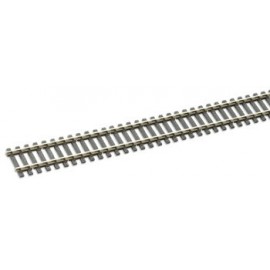In scale modelling, "flock" refers to finely ground fibres or particles used to simulate textures such as grass,...
No products
Product successfully added to your shopping cart
There are 0 items in your cart. There is 1 item in your cart.
Search Tips
Christmas and New Year
We are dispatching orders every weekday apart from Christmas Day, Boxing Day and New Year's Day.
If you select next day delivery at checkout, please note deliveries are not made on public holidays or Sundays.
The shop in Sandown is open 23rd and 24th December, then closed from 25th December, reopening on 30th December.
What is a sector plate?
A sector plate is a specialised type of turntable commonly used in railway modelling, to allow trains or rolling stock to change direction or be diverted onto different tracks within a compact space. Unlike a traditional turntable, which rotates 360 degrees, a sector plate pivots only through a limited angle, typically between 30 and 90 degrees, to align with adjacent tracks. This can make it an efficient solution in layouts where space is at a premium, as it requires less room than a full turntable or complex pointwork.
In practical terms, a sector plate is a flat, moveable section of track that swings horizontally from a fixed pivot point at one end. By moving the plate, modellers can connect a single incoming track to several outgoing tracks without the need for multiple sets of points (switches), which would otherwise take up valuable real estate on the layout. This makes sector plates especially useful in compact or modular layouts, where operational flexibility needs to be balanced with space constraints.
Sector plates are commonly used in fiddle yards or hidden parts of a layout, where their function is more practical than scenic. However, with careful design, they can also be incorporated into visible sections of the layout, especially in industrial or depot settings where real-life railway operations might employ similar systems. Their simplicity and ease of use make them a popular choice among modellers looking to maximise track usage without cluttering the layout with additional pointwork.
In terms of construction, a sector plate is relatively straightforward to build. It typically consists of a flat baseboard section with tracks mounted on top, connected to a pivot point, which could be a simple hinge. The plate swings freely within a set range, and stops can be fitted to ensure precise alignment with the adjacent tracks. Some modellers also add electrical contacts to ensure smooth power transfer when the tracks are aligned. More advanced setups might include motorised operation, allowing for remote control of the plate’s movement.
One of the key advantages of a sector plate is its ability to reduce the number of points needed on a layout, which not only saves space but also cuts down on costs and maintenance. Points can be prone to mechanical issues over time, especially in smaller scales, and sector plates offer a robust alternative with fewer moving parts. Additionally, by using a sector plate, modellers can simplify the wiring of their layout, as fewer isolated sections of track need to be managed.
While sector plates are primarily associated with railway modelling, the concept can also be applied to other types of scale models, such as in car or tram layouts, where vehicles need to be directed along different routes. Their adaptability and space-saving qualities make them a versatile tool in any modeller’s repertoire, offering operational flexibility without compromising on design.
Click here to receive the tips weekly in your mailbox. You can unsubscribe at any time.








